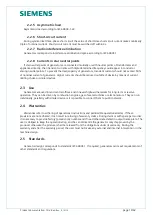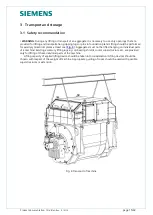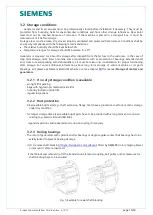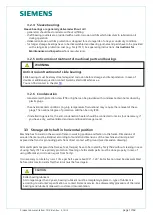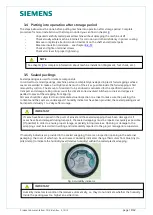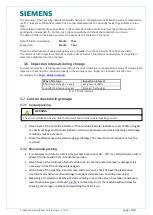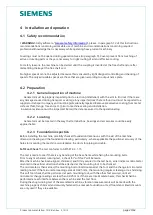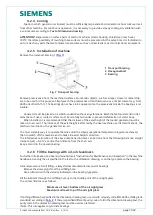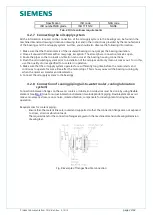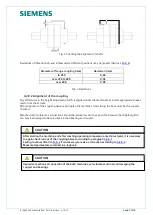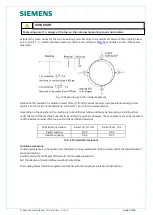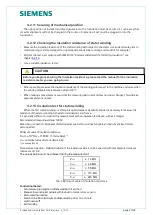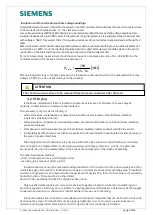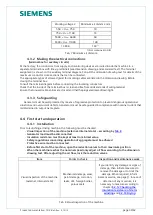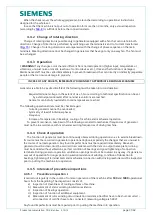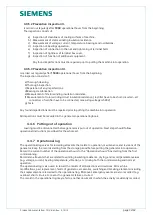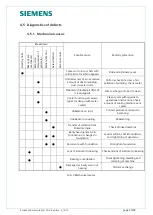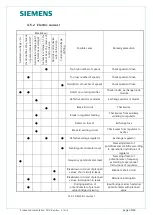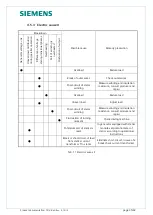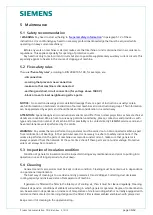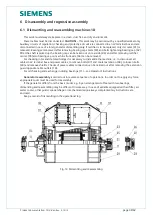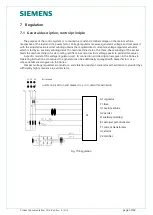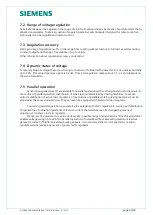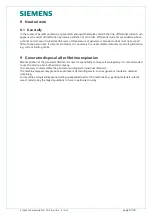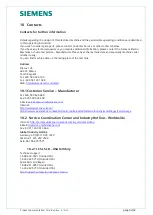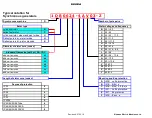
s
Product documentation 1D
3.8.
en
Rev. E, 10/13
page 28/42
Insulation test for excitation and low-voltage windings
To avoid damaging the semi conductors, these have to be short-circuited. All connections of the semi conductors have
to be connected to their heat sinks, i. e. the clamping covers.
Low-voltage windings of MICALASTIC design are to be tested essentially the same as high-voltage windings. Since
insulation resistance can reach k
Ω
v
alues in the presence of high temperatures, it is advisable to take measurements
with voltages
<
500 V, for example 100 V. The insulation resistance of rotor windings is measured against the earthed
shaft.
When in operation and at normal operating temperature, excitation windings should have an insulation resistance of
not less than 0.1 M
Ω
. If not, the windings should be cleaned or dried. Particular care should be given to the exciter
connection on the shaft and the pole connections in the stator of the brushless exciter.
At room temperature, new exciters should have an insulation resistance per pole of R
is
>
200
M
Ω
.
For the
complete winding, this means a minimum resistance of
[ ]
Ω
>
M
No
Pole
R
is
.
200
min
,
After prolonged storage or lengthy operation, the insulation resistance should first be measured with a low
voltage (
<
500 V) to rule out any damage to the winding.
4.2.14
Drying
If the above-mentioned minimum insulation resistance values are not attained, the cause may be
moisture, contamination or damage to the insulation,
It is necessary to dry the stator winding, if
•
external moisture, contamination or damage can be ruled out as the cause of the minimum insulation
resistance value being too low.
•
external moisture is observed on the winding surface, irrespective of whether or not the minimum insulation
values are achieved.
•
after deposits or dirt have been removed, the minimum insulation resistance values are still not reached.
•
incompletely hardened resins or varnishes are assumed to be responsible for low insulation resistance values in
the case of repaired machines
The simplest method of desiccation is a dry area with 80
o
C clean warm air and with exhaust. Generator
does not have to be disassembled. Concerning generators with high protection e.g. IP 54, the parts that
secure protection must be disassembled. Time of desiccation depends on the degree of humidity.
The other desiccation methods:
- short-circuit operation at I
N
with foreign exciter
- warming up by means of direct current
Insulation resistance must be measured during desiccation. At the start it will drop down quickly and then
it will raise again. Desiccation is finished when insulation resistance reaches corresponding value. If insulation
resistance of generator is not improved after longer period of desiccation, then the low value is not caused by
humidity in stator. There must be another defect.
Record to the operational log that the drying has been done.
Only qualified professionals can carry out cable lead to generator and its connection to switching and
protective apparatus. And they have to adhere to valid regulations and standards. Cables must be thoroughly
connected, and can stress connection terminals neither in tension nor in bending.
Connection cables are connected in compliance with connection diagrams that can be found on inner side
of terminal box cover. Terminal bolt must be properly tightened so as not to warm up and loose due to
resistance during operation. Terminal box must be closed after the connection is finished.
The short circuit wires have to be removed from the semi conductors after the test!
ATTENTION

